The Chakras

Men of great knowledge actually found out about the chakras – their workings, their petals, their sounds, their infinity, their co-relational powers. They found the life of the human is totally based on these chakras. They developed into a whole science. This total science gave birth to Kundalini Yoga. That is how Kundalini Yoga was born. – Yogi Bhajan
Chakras are whirling energy centres, that create a pathway for the transfer of subtle energies through our physical and mental bodies. They are located from the base of the spine to the crown of the head, with the eighth chakra being the electromagnetic field, your aura.
Chakra can be translated as wheel, however the chakras are more aptly described as “spinning vortices of energy existing in many dimensions.” (The Kundalini Yoga Experience p.32)
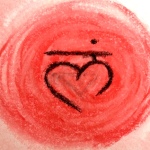 The first chakra is the base or root. Called Muladhara in Sanskrit. it is located in the base of the spine, at the perineum. This chakra is the foundation of the system. It relates to the Earth element and all things Earth in nature. It is involved with our bodies, health and survival and relates to our ability to project, focus and manifest our Earthly needs.
The first chakra is the base or root. Called Muladhara in Sanskrit. it is located in the base of the spine, at the perineum. This chakra is the foundation of the system. It relates to the Earth element and all things Earth in nature. It is involved with our bodies, health and survival and relates to our ability to project, focus and manifest our Earthly needs.
Attributes: colour is red; it is associated with elimination, the adrenals and the coccygeal nerve
Qualities: when balanced/unblocked – grounded, centred, secure, loyal, stable, healthy functions of elimination. When unbalanced/blocked – fear, insecurity, feeling of not belonging (on Earth, in ones culture or family), weak constitution, elimination problems, reduced physical and mental resistance.
Yoga postures: crow pose (squats), chair pose, body drops, frog pose, root lock (Mulbandh), front stretches.
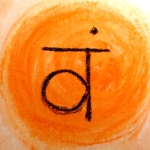 The second chakra is to do with change. Called Svadisthana in Sanskrit, it is where one becomes two and solid becomes liquid as we immerse ourselves in the element of water. It is located in the sex organs or sacral area, and is the centre of our creativity, where consciousness is derived from flow, duality and the attraction of opposites.
The second chakra is to do with change. Called Svadisthana in Sanskrit, it is where one becomes two and solid becomes liquid as we immerse ourselves in the element of water. It is located in the sex organs or sacral area, and is the centre of our creativity, where consciousness is derived from flow, duality and the attraction of opposites.
Attributes: colour is orange; associated with sex organs, reproductive glands (gonads), kidneys, bladder and the sacral nerve.
Qualities: When balanced/unblocked – positive, relaxed attitude to sexuality, patience, creativity, mutually empowering relationships, genuine intimacy. When unbalanced/blocked – rigid emotions, frigidity, guilt, no boundaries, shallow relationships, problems with reproductive organs and kidneys.
Yoga postures: frog pose, cobra pose, butterfly, sat kriya, cat-cow flow, pelvic lifts.
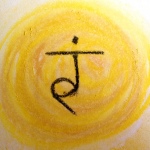 The third chakra is the navel, the centre for personal power and commitment. Called Manipura in Sanskrit it comes with choice, action, vitality and will. It is located in the navel/solar plexus and is where we explore personal power. But is it to empower oneself or to have power over others?
The third chakra is the navel, the centre for personal power and commitment. Called Manipura in Sanskrit it comes with choice, action, vitality and will. It is located in the navel/solar plexus and is where we explore personal power. But is it to empower oneself or to have power over others?
Attributes: colour is yellow; associated nerves and organs are the navel plexus, liver, gall bladder, spleen, digestive organs, pancreas and adrenals.
Qualities: When balanced/unblocked – self esteem, identity, judgement. It is where the strength for inner balance and good health is developed. When unbalanced/blocked – anger, greed, shame, despair, obstacles everywhere. Not enough strength and spontaneity, refuting ones own wishes and emotions. Problems with digestion, liver, gall bladder and pancreas.
Yoga postures: stretch pose, sat kriya, peacock pose, bow pose, fish pose, diaphragm lock, breath of fire, all exercises that train the abdominal muscles.
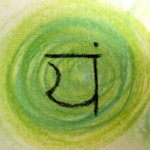 The fourth chakra is the heart, the home of compassion and Infinite love. Anahata in Sanskrit, the heart is located in the middle of the chest, between the nipples, and is the centre of love and awakening, where ‘me’ becomes ‘we’.
The fourth chakra is the heart, the home of compassion and Infinite love. Anahata in Sanskrit, the heart is located in the middle of the chest, between the nipples, and is the centre of love and awakening, where ‘me’ becomes ‘we’.
Attributes: colour is green; associated organs are the heart, lungs and thymus gland.
Qualities: when balanced/unblocked – compassion, kindness, forgiveness, service, love, recognising these qualities in others. Sacred transformation, awakening to spiritual awareness. When unbalanced/blocked – grief, attachment, easily hurt, dependent on love and affection from others, fear of rejection, helper syndrome, heartlessness, heart and blood pressure problems.
Yoga postures: ego eradicator, yoga mudra, bear grip, baby pose, all arm exercises and exercises that twist the upper torso.
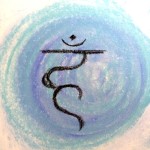 The fifth chakra is the throat, where sound reverberates into the Ether. Vishuddha in Sanskrit and located at the throat, the fifth chakra is the focus of communication, of hearing and speaking the truth. It is the centre for language, knowledge and the ability to communicate effectively and authentically.
The fifth chakra is the throat, where sound reverberates into the Ether. Vishuddha in Sanskrit and located at the throat, the fifth chakra is the focus of communication, of hearing and speaking the truth. It is the centre for language, knowledge and the ability to communicate effectively and authentically.
Attributes: colour is light blue, associated with the trachea, throat, cervical vertebrae and thyroid.
Qualities: When balanced/unblocked: healthy self expression and interactions. You speak the truth and are listened to as an authoritative voice, you hear what is said. When unbalanced/blocked: lethargy, weakness in expression and descriptive abilities, voice problems, insecurity and fear of other peoples opinions, cunning, creative untruthfullness, speaking too bluntly; throat, neck and thyroid problems.
Yoga postures: all chanting is good for the fifth chakra, shoulder stand, cobra pose, plow pose, camel pose, cat-cow, neck rolls, nose to knees.
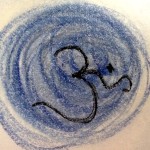 The Sixth Chakra is Ajna, the third eye, where we find our intuition, wisdom and identity. Located at the top of the nose, between the brows, the sixth chakra is where we perceive the realms beyond as we transcend time and look beyond duality. Let there be light and let us see through the darkness. This is the centre of intuition, clairvoyance, of visualising and fantasising. Here you have concentration and determination, self-initiation, the power of projection, and understanding your purpose.
The Sixth Chakra is Ajna, the third eye, where we find our intuition, wisdom and identity. Located at the top of the nose, between the brows, the sixth chakra is where we perceive the realms beyond as we transcend time and look beyond duality. Let there be light and let us see through the darkness. This is the centre of intuition, clairvoyance, of visualising and fantasising. Here you have concentration and determination, self-initiation, the power of projection, and understanding your purpose.
Attributes: colour is indigo, it is associated with the brain, pituitary gland, hypothalamus, and autonomic nervous system.
Qualities: When balanced/unblocked: comfortable in any reality, have clear perception, reliable intuition, seeing energy within and beyond matter and form. When unbalanced/blocked: grief, feeling “out of it”, out of the body or out of touch with the body, confusion of what is real and what appears to be real, inability to focus on one thing, hiding in intellectual analysis, fear of death.
Yoga postures: Meditating on the third eye, long chant, kirtan kriya, archer pose, whistle breaths, yoga mudra, all exercises where the forehead rests on the floor.
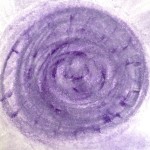 The Seventh Chakra is the crown, Sahasrara in Sanskrit. Located on the top of the head the crown chakra is also known as the tenth gate, for here lies the gateway from our physical being to Infinity. This is the centre of knowing, transcendence, where every element of every chakra exists, here we are One. This is the seat of the soul, connection to the highest self, enlightenment, unity, elevation, your relationship to the unknown.
The Seventh Chakra is the crown, Sahasrara in Sanskrit. Located on the top of the head the crown chakra is also known as the tenth gate, for here lies the gateway from our physical being to Infinity. This is the centre of knowing, transcendence, where every element of every chakra exists, here we are One. This is the seat of the soul, connection to the highest self, enlightenment, unity, elevation, your relationship to the unknown.
Attributes: colour is violet, it is associated with the brain, pineal gland, cerebral cortex, and central nervous system.
Qualities: When balanced/unblocked: bliss of being in but not of this world, the experience of all as one, saintliness, Samadhi. When unbalanced/blocked: can manifest as abuse of lower life forms, doubt and denial of the spiritual realm and religious extremism.
Yoga postures: Ego eradicator, root lock, sat kriya, concentrating on the tip of the nose, all meditation.
In Kundalini Yoga we recognise the Aura as the Eighth Chakra. The aura is your electromagnetic field, coloured white this is your radiance. Being the total of all the chakras it combines their effects and constitutes their total protection. The aura protects and projects. When the aura is weak or unbalanced it can manifest as shyness, being withdrawn and vulnerable,
Yoga postures: Triangle pose, ego eradicator, archer pose, all arm exercises, all meditation.
References
The Aquarian Teacher (level 1 instructor textbook), 4th Edition, Yogi Bhajan 2007
The Kundalini Yoga Experience: bringing body, mind, and spirit together, Guru Dharam S. Khalsa & Darryl O’Keefe 2002
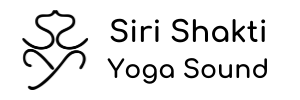
Follow Siri Shakti Yoga Sound